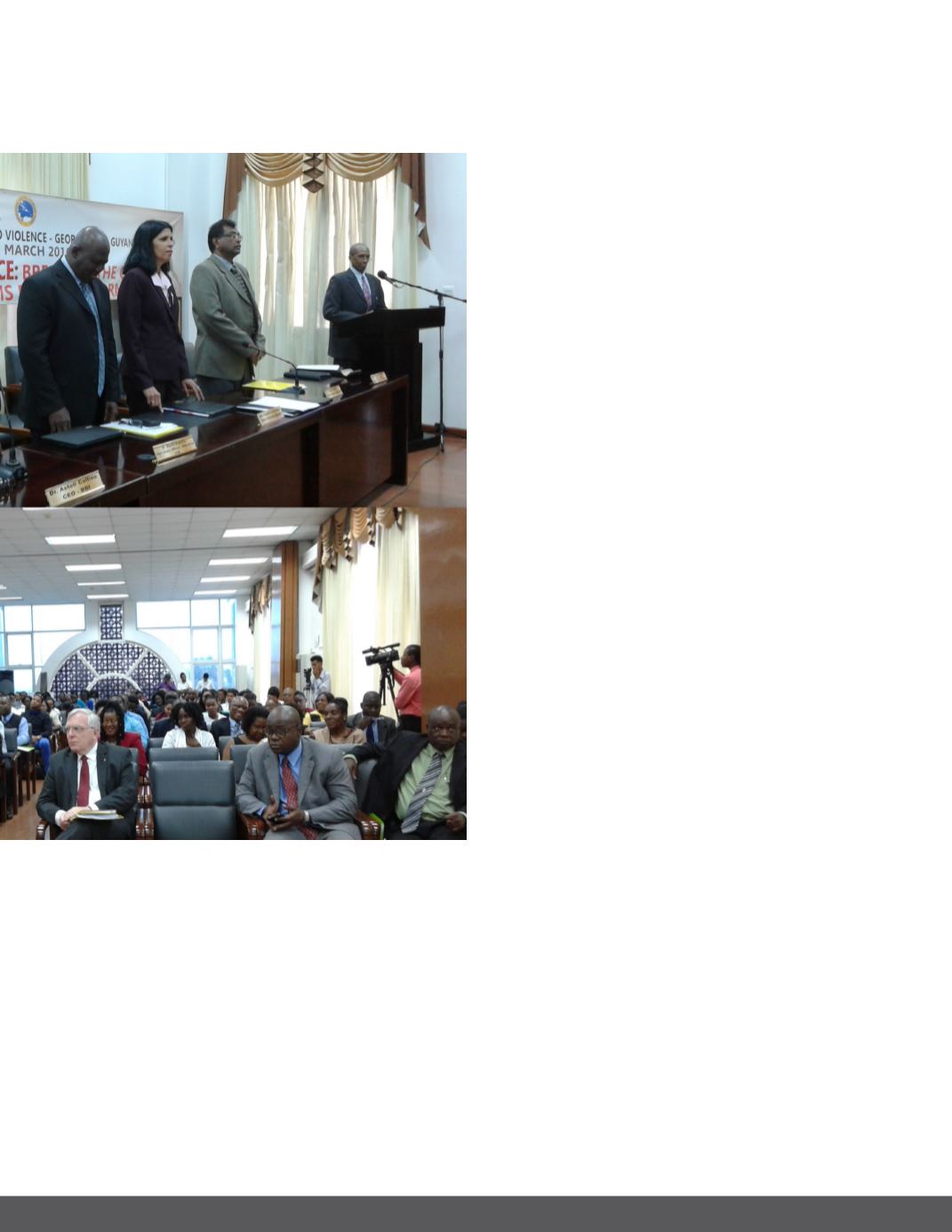
Business View Caribbean - March 2016 19
bean. This project, which aims to reduce youth on
youth violence, particularly in schools, is now being
piloted in five member states: Antigua and Barbuda,
Jamaica, St. Kitts and Nevis, Saint Lucia, and Trini-
dad and Tobago. New platforms for transformation
were explored to break the cycle of youth crime and
violence. Specifically, CARICOM policy-makers, the
media and other stakeholders were sensitized on
the major elements of youth crime and violence and
on the responses to break the silence. Good prac-
tices were shared with a view to replicating the les-
sons learned.
At the same time, strategies for a multi-sectoral
“whole of society” response to the challenge were
examined, as well as the means for greater collabo-
ration among institutions and development partners
to sustain CARICOM’s response to youth crime and
violence.
Approximately 100 participants from across CARI-
COM engaged in interactive sessions centered on
four main topics/issues: violence against children;
school violence; gender based violence; and youth
gangs and violence, together with the cross-cutting
themes of gender, culture and other social determi-
nants.
The forum employed a mix of feature presentations,
panel discussions and video presentations, with par-
ticipation from a wide range of stakeholders, includ-
ing policy-makers in all sectors: law enforcement,
the private sector, labor, development partners, civil
society, academia, faith-based and community orga-
nizations, youth, reformed non-traditional leaders,
and special interest groups.
Crime and violence has negatively impacted the
quality of life of CARICOM member states. It has
placed pressure on limited resources, reduced lo-
cal and foreign direct investment and threatened the
achievement of the developmental goals of these
states. According to the CARICOM Eye on the Fu-
ture Report of 2010, the number one concern of
youth is crime and violence. Sixty percent of CARI-
COM’s population is under the age of 30. The main
perpetrators as well as the victims of crime are
young people. Moreover, violence is the lead cause
of death among males aged 15-24 in the Caribbean.
Not only is the incidence of youth violence increas-
ing, but according to a 2010 regional survey in seven
member states, the pattern indicates: a gender di-
mension to violence in which violent acts are car-
ried out mainly by young males against other young


